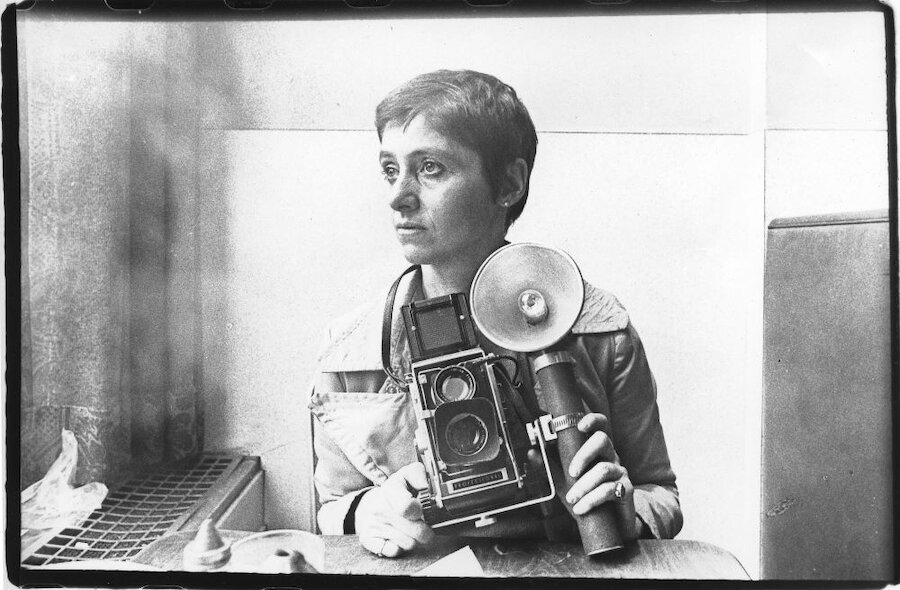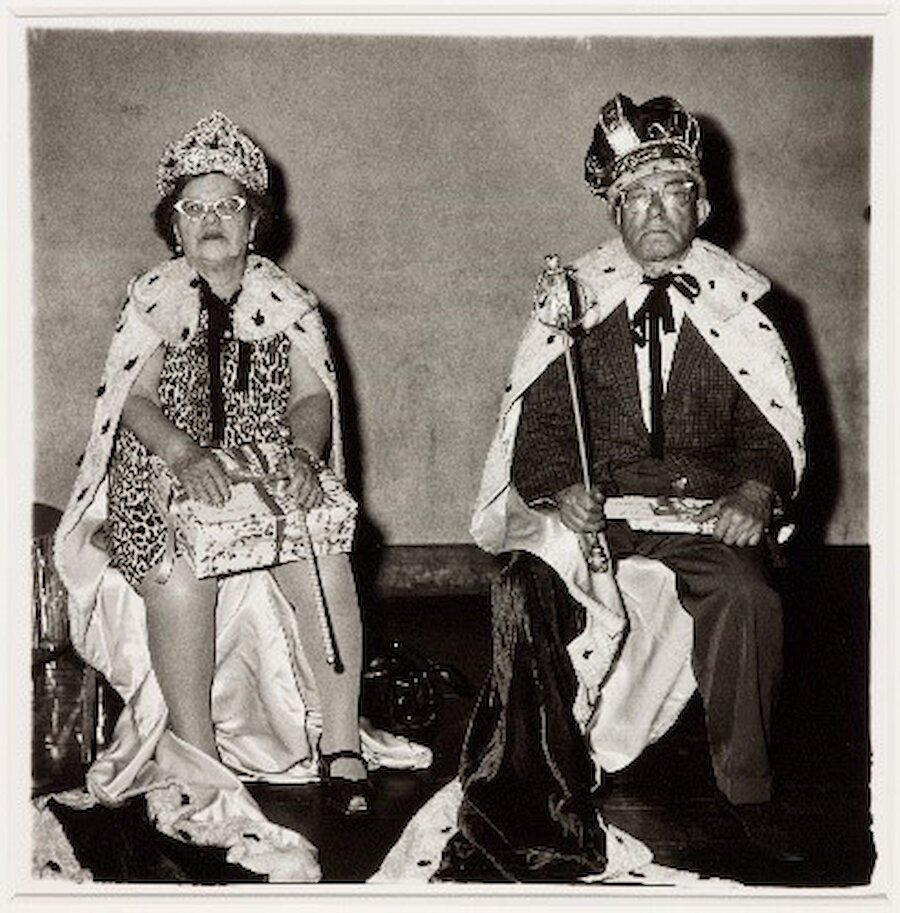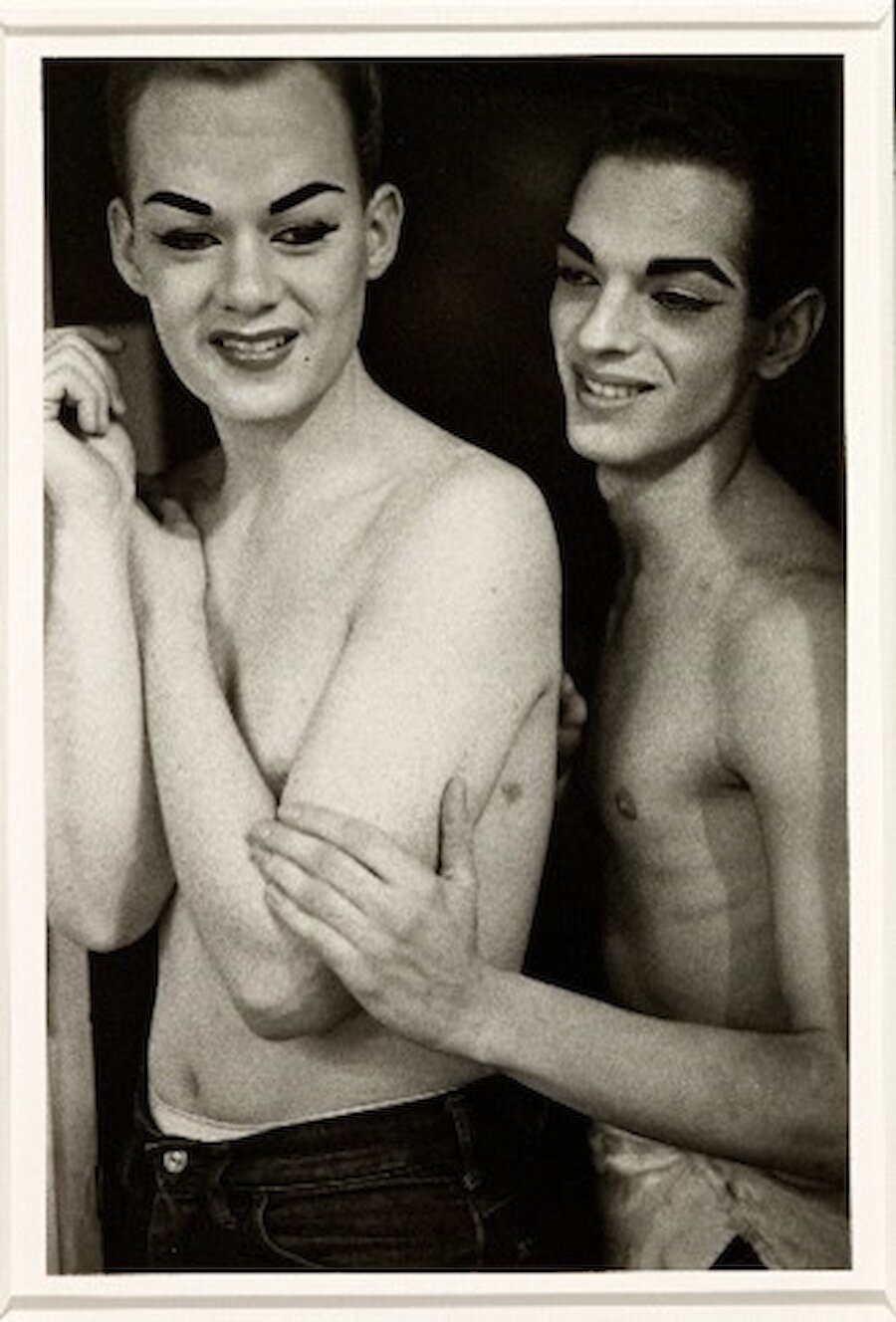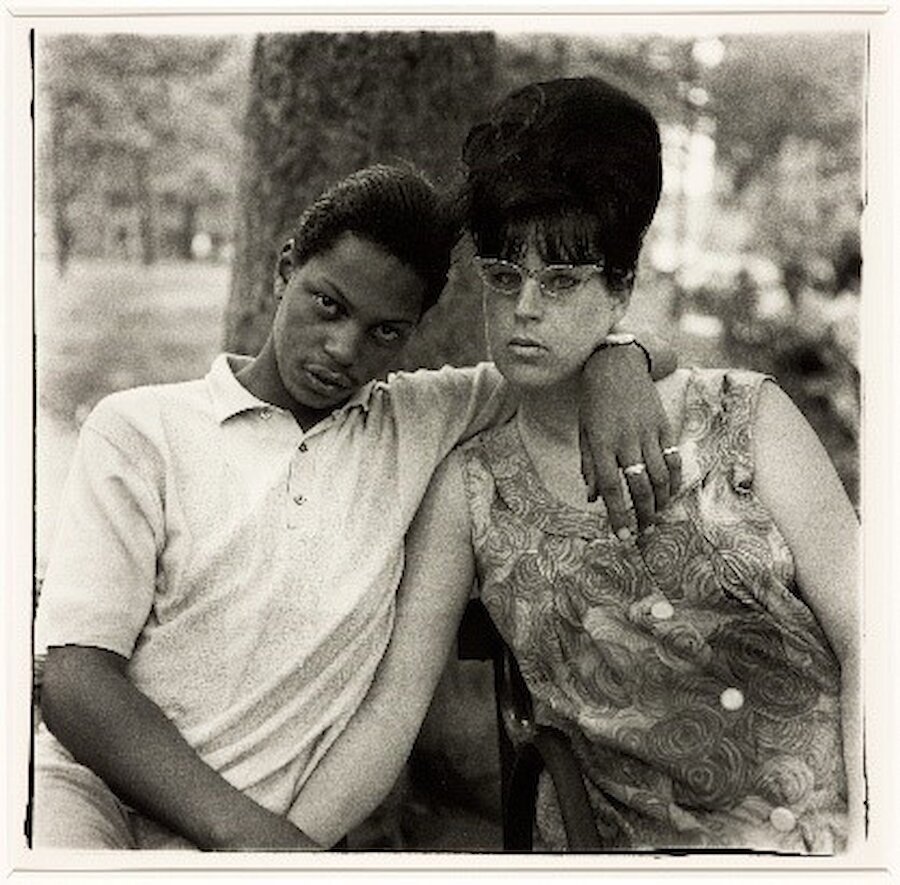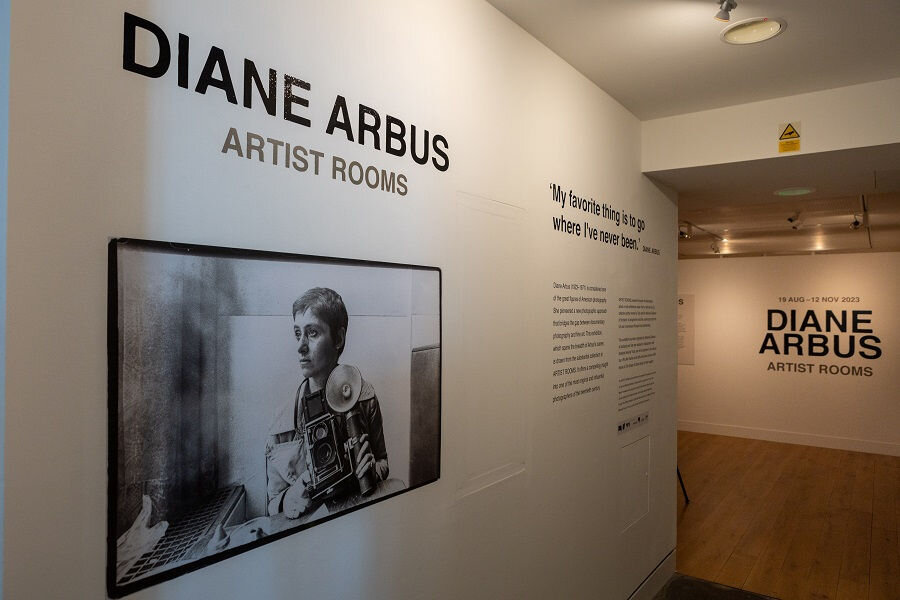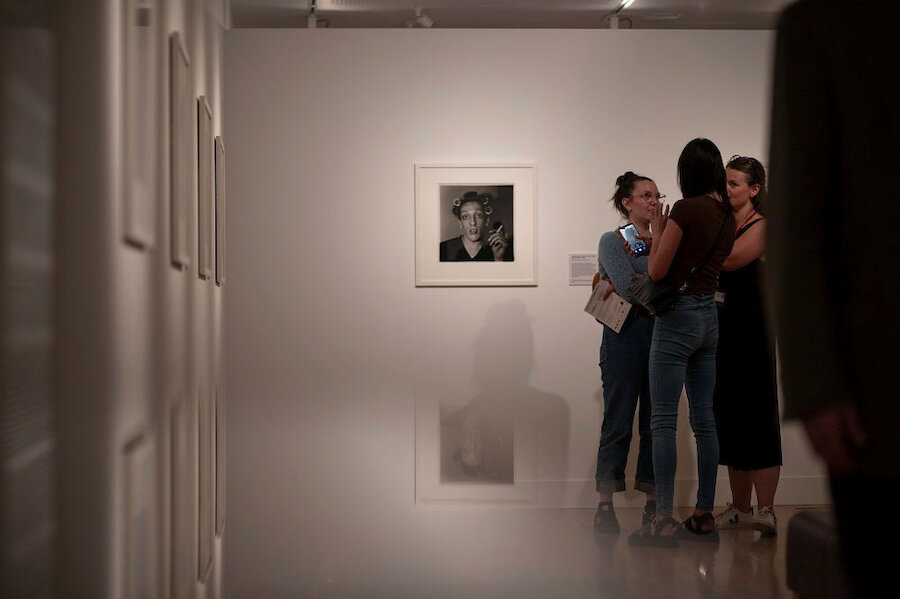She began photographing in the 1940s; her first published images appeared in Esquire magazine in 1960. Over the next ten years, Arbus produced an extraordinary body of work in which she documented the lives, appearances and emotions of people, celebrating the extraordinary in the ordinary.
A new display of powerful and iconic photographs by Diane Arbus, one of the most influential photographers of the 20th century, can be seen in Da Gadderie, in Shetland Museum and Archives. She is widely considered to be one of the great figures of American photography, pioneering a new approach which bridged the gap between documentary photography and fine art.
Photograph of Diane Arbus around 1968 © Photo: Roz Kelly / Michael Ochs Archives via Getty Images
The selection of works on display is part of the Artists Rooms collection, jointly owned by Tate and National Galleries of Scotland. Artist Rooms presents modern and contemporary art to audiences across the UK through a national programme developed through local partnerships. Shetland Museum and Archives is the most northerly venue in the British Isles for this touring exhibition.
Diane Arbus: The King and Queen of a Senior Citizens’ Dance, N.Y.C. 1970 ARTIST ROOMS Tate and National Galleries of Scotland © The Estate of Diane Arbus
Hazel Sutherland, chief executive of Shetland Amenity Trust, said: “This is a hugely exciting event for Shetland and a rare opportunity for people to see work from this extraordinary photographer in a local venue. The Gadderie is looking spectacular, and we are honoured to be sharing a selection of this powerful and thought-provoking collection.
“This is an incredible achievement by all involved and testament to Shetland Amenity Trust’s commitment to bring internationally significant exhibitions to Shetland. We would like to thank Artist Rooms, Tate and National Galleries of Scotland for their funding and for accepting Shetland Museum as a venue.”
Diane Arbus Two female impersonators backstage, N.Y.C. 1961 ARTIST ROOMS Tate and National Galleries of Scotland © The Estate of Diane Arbus
Ceri Lewis, senior curator, Artist Rooms at Tate and National Galleries of Scotland, said in her opening speech: “This is an exciting moment to see a return to Shetland for Artist Rooms - having had an exhibition here in 2014 of the work of war photographer Sir Don McCullin.
“I am delighted that we have been able to continue our relationship with Shetland Amenity Trust by bringing an exhibition of another radical and influential photographer to Shetland: this time one of the great figures of American photography.
“Artist Rooms is all about bringing great art to towns and cities all across the UK, free of charge. We do this through partnership – collaborating with local teams to create a new experience for audiences, so people – especially young people – have access to world class international art through their local museums and galleries.”
Diane Arbus: A young man and his pregnant wife in Washington Square Park, N.Y.C. 1965 ARTIST ROOMS Tate and National Galleries of Scotland © The Estate of Diane Arbus
The exhibition spans Arbus’ career and features 32 of her works. A highlight within the exhibition is the rare limited-edition portfolio of original prints, A box of ten photographs 1969-71. Arbus gave considerable thought to what this portfolio should be and how it should look, selecting a set of ten images comprising some of her most iconic portraits, including Xmas tree in a living room in Levittown 1962 and A Jewish giant at home with his parents in the Bronx, N.Y. 1970.
Her images of couples, children, carnival performers, nudists, middle-class families, drag artists and celebrities stand as an allegory of post-war American society. Through her commitment ‘to photograph everybody’, Arbus was drawn to marginalised people and communities. She built up relationships of trust with her subjects to produce powerful portraits of astonishing intimacy.
These days, we are surrounded by colour imagery, but these photographs are all in monochrome. It’s a format which arguably enhances the viewer’s appreciation of composition, the power – and subtlety – of light and shade, and the texture of the subject. Monochrome photography also seems to be particularly effective in capturing emotion; and some of these images are intensely emotional.
This is an outstanding exhibition, beautifully arranged and hung, and the team at Shetland Museum and Archives, and their partners at Artist Rooms, Tate and the National Galleries of Scotland, deserve great credit for bringing it to Lerwick.
It runs until 12 November and there is a programme of complementary events and activities.

